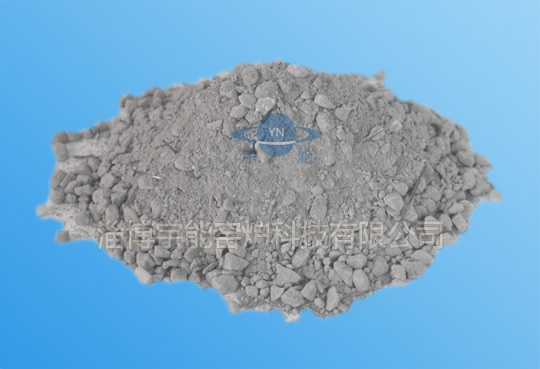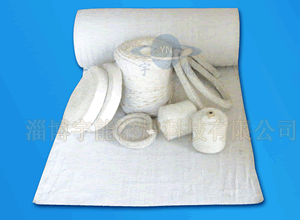Zibo Yunneng Kiln Technology Co. Ltd. Zibo Yunneng Kiln Technology Co. Ltd.
Free delivery samples
high quality assurance
Engineer's door-to-door guidance
lifelong technical support
Contact us+86159669653330086-533-5331887
Zibo Yunneng Kiln Technology Co. Ltd. Zibo Yunneng Kiln Technology Co. Ltd.
Free delivery samples
high quality assurance
Engineer's door-to-door guidance
lifelong technical support
Contact us+86159669653330086-533-5331887
Home -> News -> News -> Castable Technology ->
Basic refractory castable is a castable refractory with magnesium oxide as the main component. According to the material, it can be divided into: magnesium quality, aluminum quality, spinel quality, magnesium quality, magnesium silicon quality and magnesium carbon quality and other basic castable.
Magnesia (periclase) by fused magnesia refractory castable or sintered magnesia aggregates and the powder configuration, and adopt the magnesia cement combined with magnesia refractory castable with high purity, small line after burn rate, high refractoriness under load, but with the increase of heat treatment temperature, especially between 400 ~ 1200 ° C, because the magnesia hydration generated lose cementation of magnesium hydroxide and dehydration, the combination of refractory aggregate and powder is very loose, solid phase reaction and is very weak, causing a significant drop in the strength of the refractory castable, prone to osteoporosis, flaking off.The magnesium refractory castable bonded with water glass has the advantages of high strength, strong resistance to alkalinity and erosion ability of sodium salt melt.
However, due to the use of sodium oxide, potassium oxide and silicon dioxide as binder, the fire resistance and softening temperature under load of magnesia refractory castable are greatly reduced, thus limiting the maximum temperature of sodium oxide bonded castable.Polyphosphate-bound magnesium refractory castable has the advantages of high post-burning strength, small decrease of strength with the increase of heat treatment temperature, high softening temperature and good thermal shock resistance, but at high temperature (above 1400°C), the strength of magnesium castable decreases due to the large amount of phosphorus pentoxide volatiles.In general, magnesium castable sodium polyphosphate used as binding agent more, commonly used sodium tripolyphosphate, sodium hexametaphosphate, etc.In addition, in order to improve the high-temperature strength of magnesium refractory castable, an appropriate amount of calcium-containing materials (such as calcium carbonate, etc.) is added to generate Na2O·2CaO·P2O5 phase with high binding strength and stable existence at high temperature.However, no matter which kind of binder is used, it is difficult to overcome the problem of easy hydration and easy to crack in the drying process.Adding proper amount of silica ultrafine powder can overcome the hydration problem.
Aluminum-magnesium refractory castable is composed of fused magnesia, sintered magnesia, fused magnesia or sintered magnesia spinel, fused corundum, alumina powder, alumina powder and so on.The aluminum-magnesium refractory castable has good thermal shock resistance due to the presence of aluminum-magnesium spinel or the formation of magnesia spinel in the heating process, resulting in expansion and micro-cracks, which buffering the thermal stress inside the material. At the same time, due to the large amount of aluminum-magnesium spinel in the castable, it has a strong permeability inhibiting effect on the slag.
Magnesite refractory castable includes castable prepared with magnesite peridot and castable prepared with magnesite and silica powder.Castable with magnesium oxide and silica ultrafine powder has the advantages of good construction performance and less water consumption.When 12% silica powder is added into castable, castable with minimal residual shrinkage can be prepared. With the increase of silica content, the erosion degree of slag to castable tends to increase, while the penetration depth of slag tends to decrease.
Magnesite refractory castable is made of fused magnesite chrome sand or waste magnesite chrome brick sand and its fine powder, or made of magnesite, chromite or chromium oxide. The main binding agent is phosphate, calcium aluminate cement, cement and clay, magnesium sulfate, potassium dichromate, oxide ultra-fine powder, etc., but the better effect is polyphosphate.Using a binder composed of sodium polyphosphate and calcium-containing materials, the effect is good because the stable Na2O·2CaO·P2O5 with high binding strength is generated at low temperature to high temperature.When the CaO/P2O5 ratio is between 1.6 and 1.9, its thermal bonding strength is the highest.Due to the high-temperature decomposition of SiO2 on Na2O·2CaO·P2O5, the content of SiO2 should be strictly controlled in magnesium-chromium castable.Magnesium-chromium castable has the advantages of high service temperature, high temperature volume stability and strong slag corrosion resistance.
Magnesium-carbon refractory castable is made of fused or sintered magnesia, graphite, asphalt and liquid phenolic resin.In order to improve its strength and oxidation resistance, an appropriate amount of metal powder (such as aluminum powder, silicon powder, magnesium powder, silicon calcium powder, etc.) should be added.In order to control the curing time, organic acid should be added as curing agent.Magnesium carbonaceous castable can be cured at room temperature without heating.Once cured, it will not soften and deform when heated, and it has stable strength. However, compared with other castable, its curing time is more difficult to control.
Magnesium-alumina spinel refractory castable is composed of corundum, magnesia, bauxite and natural synthetic magnesium-alumina spinel aggregate and powder.The binders are pure calcium aluminate cement, silicon oxide ultrafine powder, alumina ultrafine powder or polyphosphate.Due to the advantages of high temperature resistance, small thermal expansion coefficient, steel water resistance and steel slag erosion, mg-al spinel produced by day fuel synthesis has better use effect than mg-al spinel castable produced in use.
Application: alkaline refractory castable can be widely used in lining of ladle, RH, DH vacuum nozzle, bottom of heating furnace, permanent lining of converter, lining of cement rotary kiln, lining of incinerator, lining of non-ferrous metal smelting, glass and other industrial furnaces.
Relevant Product Display
 High strength low cement explosion-proof castable GB-16
High strength low cement explosion-proof castable GB-16
 Vacuum forming fiber mat, fiber board
Vacuum forming fiber mat, fiber board
 Corundum mullite castable _ wear-resistant castable
Corundum mullite castable _ wear-resistant castable
 Self-flowing castable series
Self-flowing castable series
Relevant information
Hotline